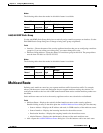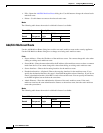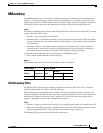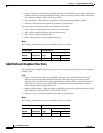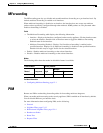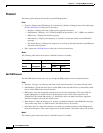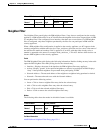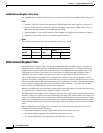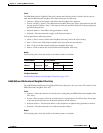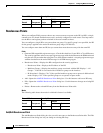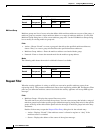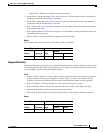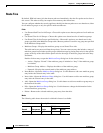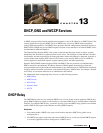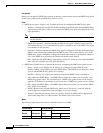
12-15
Cisco ASDM User Guide
OL-16647-01
Chapter 12 Configuring Multicast Routing
PIM
Fields
The PIM Bidirectional Neighbor Filter table contains the following entries. Double-click an entry to
open the Edit Bidirectional Neighbor Filter Entry dialog box for that entry.
• Interface—Displays the interface the bidirectional neighbor filter applies to.
• Action—Displays “permit” if the bidirectional neighbor filter entry allows participation in the DF
election process. Display “deny” if the entry prevents the specified addresses from participating in
the DF election process.
• Network Address—The address being permitted or denied.
• Netmask—The network mask to apply to the Network Address.
You can perform the following actions:
• Insert—Click to insert a bidirectional neighbor filter entry before the selected entry.
• Add—Click to add a bidirectional neighbor filter entry after the selected entry.
• Edit—Click to edit the selected bidirectional neighbor filter entry.
• Delete—Click to remove the selected bidirectional neighbor filter entry.
Modes
The following table shows the modes in which this feature is available:
For More Information
Add/Edit/Insert Bidirectional Neighbor Filter Entry, page 12-15
Add/Edit/Insert Bidirectional Neighbor Filter Entry
The Add/Edit/Insert Bidirectional Neighbor Filter Entry dialog box lets you create ACL entries for the
PIM bidirectional neighbor filter ACL.
Fields
• Interface—Select the interface for which you are configuring the PIM bidirectional neighbor filter
ACL entry.
• Action—Select permit to allow the specified devices to participate in the DF election. Select deny
to prevent the specified devices from participating in the DF election.
• Network Address—The network address of the neighbor or neighbors being permitted or denied.
• Netmask—The network mask to use with the Network Address.
Modes
The following table shows the modes in which this feature is available:
Firewall Mode Security Context
Routed Transparent Single
Multiple
Context System
• — • ——



